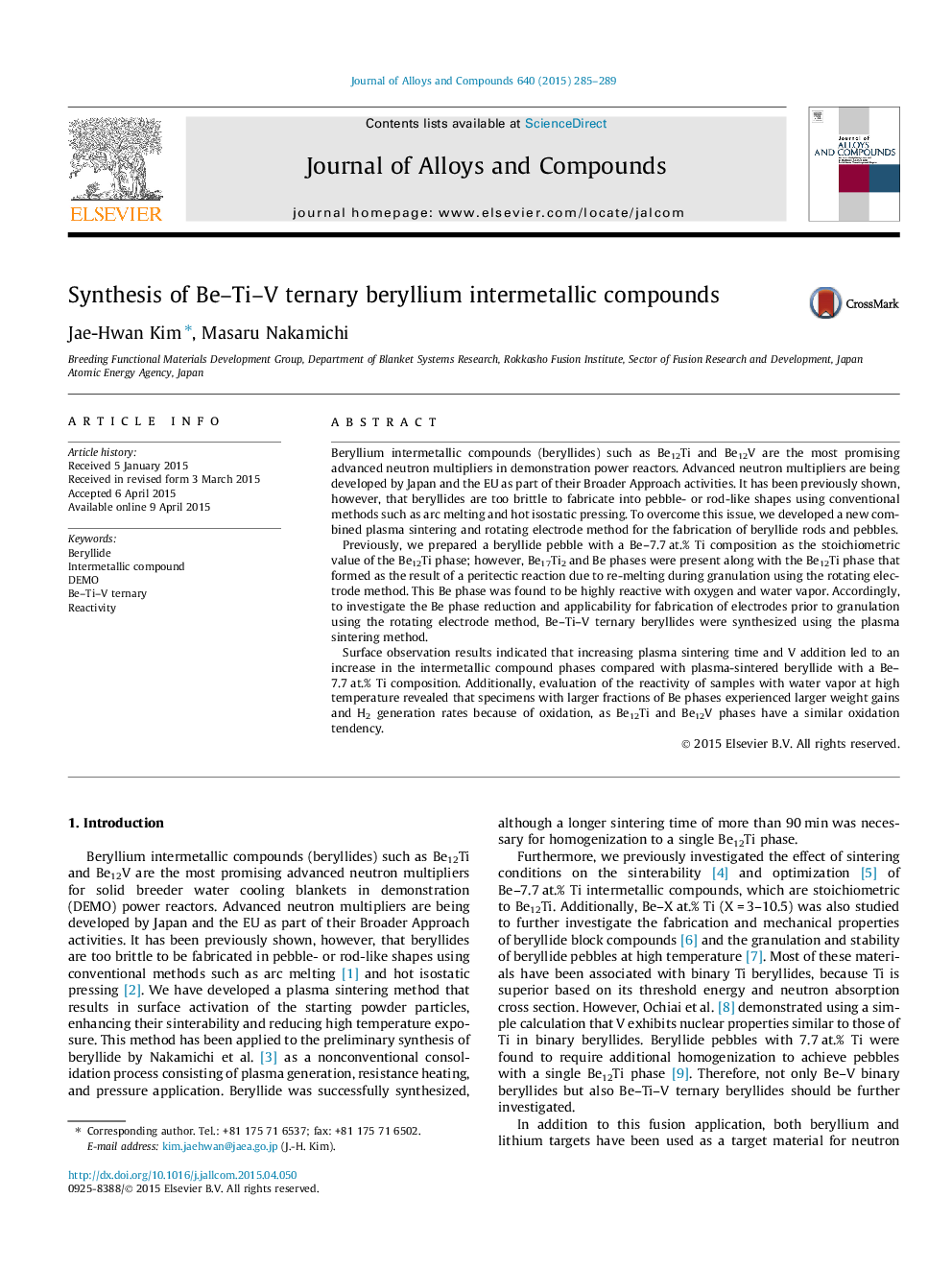| Article ID | Journal | Published Year | Pages | File Type |
|---|---|---|---|---|
| 1608972 | Journal of Alloys and Compounds | 2015 | 5 Pages |
•Preliminary synthesis of ternary Be–Ti–V beryllides was investigated.•An area fraction of Be phase increased with increase of V amount in the beryllide because of increasing melting temperature.•The increase of Be phase fraction resulted in increase of weight gain as well as H2 generation.•The beryllides with lower V contents indicated to better phase stability at high temperature.
Beryllium intermetallic compounds (beryllides) such as Be12Ti and Be12V are the most promising advanced neutron multipliers in demonstration power reactors. Advanced neutron multipliers are being developed by Japan and the EU as part of their Broader Approach activities. It has been previously shown, however, that beryllides are too brittle to fabricate into pebble- or rod-like shapes using conventional methods such as arc melting and hot isostatic pressing. To overcome this issue, we developed a new combined plasma sintering and rotating electrode method for the fabrication of beryllide rods and pebbles.Previously, we prepared a beryllide pebble with a Be–7.7 at.% Ti composition as the stoichiometric value of the Be12Ti phase; however, Be17Ti2 and Be phases were present along with the Be12Ti phase that formed as the result of a peritectic reaction due to re-melting during granulation using the rotating electrode method. This Be phase was found to be highly reactive with oxygen and water vapor. Accordingly, to investigate the Be phase reduction and applicability for fabrication of electrodes prior to granulation using the rotating electrode method, Be–Ti–V ternary beryllides were synthesized using the plasma sintering method.Surface observation results indicated that increasing plasma sintering time and V addition led to an increase in the intermetallic compound phases compared with plasma-sintered beryllide with a Be–7.7 at.% Ti composition. Additionally, evaluation of the reactivity of samples with water vapor at high temperature revealed that specimens with larger fractions of Be phases experienced larger weight gains and H2 generation rates because of oxidation, as Be12Ti and Be12V phases have a similar oxidation tendency.
